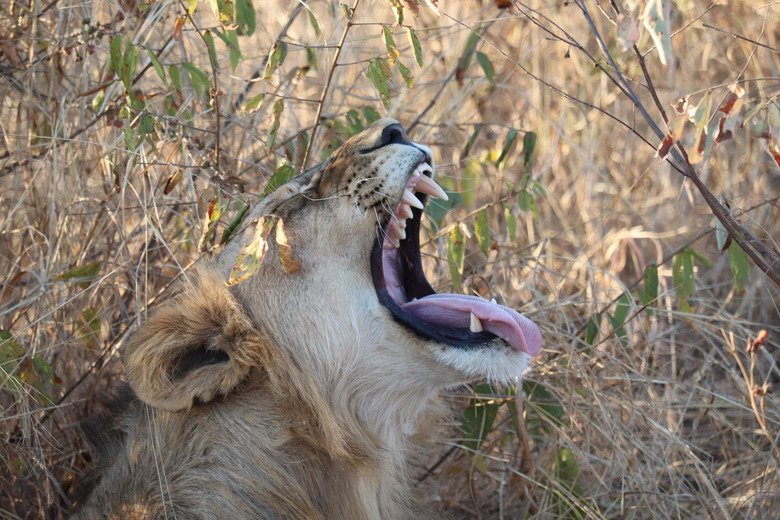Interesting Facts About Lions & Animals
One of the larger species of felines alive today, lions are classified as big cats, which means they have the ability to roar, but lack the ability to purr like house cats do. Historically, their range included Africa, Asia and Europe, but today they are only found in sub-Saharan Africa and one small region in Asia. There are several interesting facts about lions and the way they live.
Prides
Prides
Lions live in groups called prides. Prides typically consist of several related female lions — lionesses — up to three adult males and their young. While female cubs normally remain within their pride as they grow up, most male cubs leave the pride to establish their own pride. Adult males are constantly challenged by other males for control of prides. Lions are actually the only cats that live in groups, but many other species of animals, including deer, wolves and prairie dogs, live in groups.
Female Hunters
Female Hunters
Lionesses are the primary hunters in a lion pride. The male lions provide the pride with protection while the females provide the food. Lionesses work together to take down larger prey, such as wildebeest and zebra. Oftentimes, cubs join the hunt at about one year of age. While many other animals, including wolves, hunt in packs, lions are the only species in which the females do the majority of hunting.
Manes
Manes
Male lions are easily distinguished by their impressive manes. This ruffle of fur surrounding the lion's head makes the lion appear larger, which helps intimidate other animals. The mane also protects the lion's neck in battle. Thicker, darker manes are indicators of strong, healthy males, and it has been shown that females choose males with fuller, darker manes for mating. Lions are the only cats that have manes, and only the males of the species have them. Horses, donkeys, camels, zebra and even giraffes also have manes, although in these species, both males and females grow them.
Cubs
Cubs
Lionesses often mate with more than one male during a mating cycle. The average gestation period for lions is 110 days and females typically give birth to a litter of one to four cubs. The cubs are blind and helpless when they are born and rely on their mother's care for a number of weeks before they are introduced to the pride. Many feline species, including the big cats, give birth to several cubs like lions do. A number of other animal species also give birth to more than one offspring at a time and care for their young for a period of time after they are born.
Cite This Article
MLA
Powell, Jack. "Interesting Facts About Lions & Animals" sciencing.com, https://www.sciencing.com/interesting-lions-animals-8491141/. 22 November 2019.
APA
Powell, Jack. (2019, November 22). Interesting Facts About Lions & Animals. sciencing.com. Retrieved from https://www.sciencing.com/interesting-lions-animals-8491141/
Chicago
Powell, Jack. Interesting Facts About Lions & Animals last modified March 24, 2022. https://www.sciencing.com/interesting-lions-animals-8491141/
